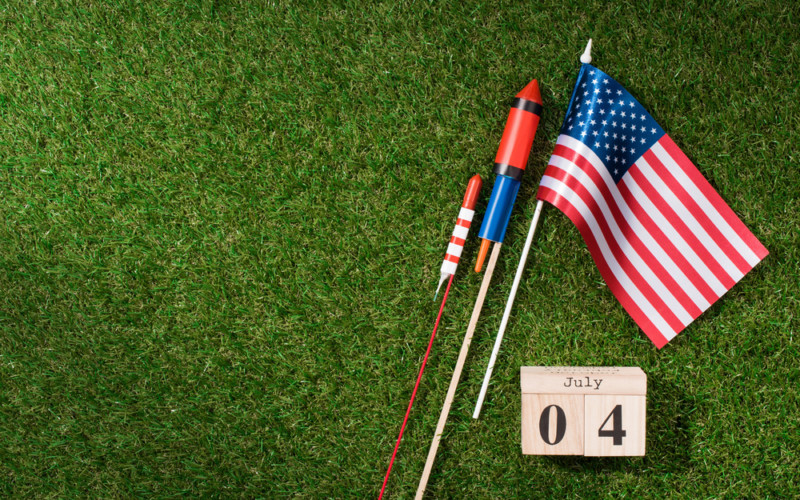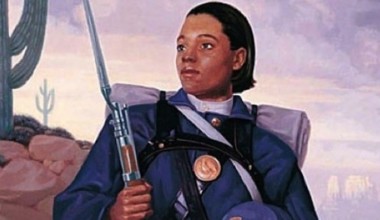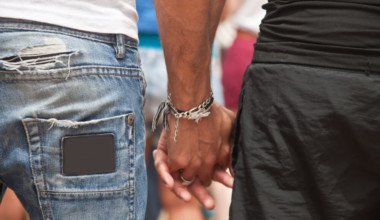From the debate on what day actually should represent Independence Day to multiple copies of the Declaration of Independence, there are many little-known facts about American Independence Day that you probably never knew. So read on for eleven fun facts you never knew about American Independence Day, July 4th!
Table of Contents
Fun Facts About American Independence Day
1. The big bang theory
The first official fireworks show to celebrate the fourth of July was set off in 1777 in Philadelphia. New York City hosts the largest fireworks displays in the nation.
Sponsored by Macy’s, the show uses upwards of 56,000 tons of explosives and costs anywhere from $6 million and up. Over three million spectators show up to personally see the extravaganza, while another estimated eight million will watch it on television.
Boston’s fireworks display is also very popular throughout the country due to the historical significance of the city, the use of genuine cannons, and the live music accompaniment by the world-renowned Boston Pops Orchestra.
Philadelphia, where the Declaration of Independence was actually signed, boasts a large audience and spectacular musical performers after the display. The first official fireworks show to celebrate the fourth of July was set off in 1777 in Philadelphia.
2. Six-day celebration
Technically, the real Independence Day should be celebrated on July 2. It was on this date that the Second Continental Congress voted to separate from Britain.
The Declaration of Independence was quickly penned, and on July 4th Congress approved the rough draft and ordered it sent to a printer to be copied and spread amongst the colonies.
It wasn’t read publically until July 8th, 1776, in Philadelphia at a site now known as Independence Square. By this logic, July the Fourth should be nearly a week-long paid holiday.
3. July 4th not a good day for some founding fathers
Ironically, both John Adams and Thomas Jefferson died on July 4th, 1826. President James Monroe died on this date as well in 1831, and Paul Revere passed away on July 4th in 1863. Conversely, Calvin Coolidge, the 30th president of the United States, was born on July 4t4, 1872.
4. Print before parchment
On the night of July 4, 1777, the Declaration of Independence was released as a series broadsides, or posters and handouts, and were sent out to the colonies and to General George Washington to be read before his troops. A copy was sent to King George as well. Out of the estimated 200 printed copies, only 26 are known to exist still.
The handwritten document, known as the engrossed copy, was written on parchment paper and signed by all parties on August 2, 1776; therefore, that iconic painting of the founding fathers signing the document with a flourish on July 4th isn’t quite accurate.
5. Your John Hancock is required
There were no signatures on the broadsides, but there were two names printed at the bottom: John Hancock, president of the Continental Congress, and Secretary Charles Thompson, who was listed as a witness.
Another broadside was released in January of 1777 that listed all of the signers. John Hancock was the first to sign the handwritten version on August 2, 1776, and he did it with such flair that his name is forever known as a euphemism for signatures.
Legend has it that he made his signature large so that King George could read it easily, without his glasses. And large it was; the iconic signature covers just over six square inches of the document. John Adams’ was among the smallest signatures of his peers, at just over half a square inch.
6. Unpaid holiday
While July 4th celebrations became quite customary across the fledgling United States, it was still not recognized as a national holiday. In 1870, Congress passed a bill to acknowledge certain days as holidays, including Christmas.
July 4th was one of these holidays to gain official recognition. July 4th did not become a federal day off, with pay, until 1941. Massachusetts, however, had begun to recognize the date as a state holiday starting in 1781.
7. Spreading the independence
While America is the first to adopt the Declaration of Independence, it has certainly not been the last. Unsurprisingly, many other countries have adopted the document as they struggled for their own freedoms.
Greece, Russia, Poland, France, and many South American countries have modeled their own documents after the Declaration of Independence. Imitation, they say, is the sincerest form of flattery!
8. Hot dog, July fourth is here!
The Fourth of July picnic is probably the most iconic tradition across the nation. The most popular picnic items. Hands down, hot dogs are the most popular picnic treat.
Initially, hotdogs were not considered an American tradition; it was only in 1893 when it was introduced as a snack at baseball stadiums that the savory sausage product was adopted as an American mainstay.
Approximately 150 million of the tasty cylinders will be consumed on July 4th alone. Coming in at a close second is the barbecue. Barbecue has gained popularity because it can feed many picnic goers and is relatively inexpensive to serve.
9. Old habits
In 1785, Bristol, Rhode Island had its first commemorative July 4th parade. It has been held annually ever since and is known to be the oldest continuous parade in celebration of the holiday in the United States.
Before Independence Day, colonists would celebrate King George’s birthday, presumably not entirely by choice. After the Declaration of Independence was adopted, colonists carried a coffin representing King George’s casket through the streets. Tough crowd.
10. Celebrate with a bang
John Adams mistakenly thought that July 2, 1776, would forever be the day remembered as the day America gained its independence.
In a letter to his wife, Abigail, John proclaimed that this date would be forever remembered, in his own words, with “games, sports, guns, bells, bonfires, and illuminations from one end of this continent to the other.” Early celebrations sure did pack a bang; artillery salutes were performed with all of the leftover cannons and munitions from the wars.
11. China loves July 4th
From gas grills to fireworks, our celebrations are made in China. It is estimated that China makes 96% of our fireworks, over $5 million on imported American flags, and a large percentage of the outdoor grills we buy.
Now, you know many fun facts about American independent days. So, share knowledge with friends and family.





